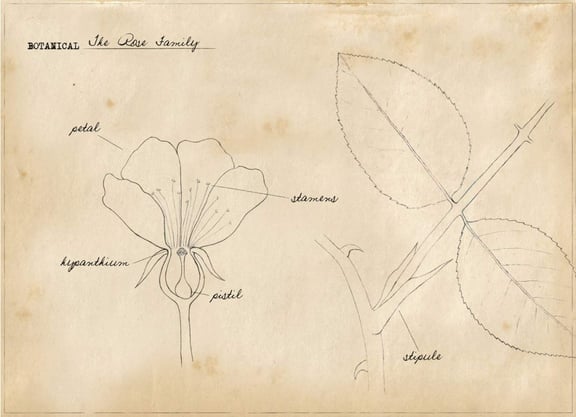This month I'll cover the botanical basics of five common plant families that you’ll encounter while taking a stroll through just about any park, trail, or garden. These will give you a good place to start, but there are many other families to explore if you fall in love with the art and science of identification.
This week we take a closer look at the roses!
Rosaceae – The Rose Family
(ro-SAY-see-ee)
Identification Tips
Perianth - The perianth consists of the calyx (sepals) and corolla (petals) together. Generally, these flowers have five sepals and five petals.
Stipules - Stipules are outgrowths at the base of a petiole (leaf stem). Look for stipules where the leaf stem meets the main stem.
Hypanthium - More than 10 stamens arranged around a floral cup or hypanthium. The sepals, petals, and stamens attach around the edge of a cuplike receptacle containing the ovary.
Food and Medicine
The Rosaceae family includes many beloved medicinal and edible plants including roses, strawberries, raspberries, blackberries, hawthorn, apples, cherries, peaches, plums, serviceberries, pears, meadowsweet, Lady's Mantle, and many more.
Medicinally, the roses have been used as heart-openers and tonics (hawthorn and rose), internal and external astringents (blackberry leaf and roots, strawberry leaf, rose), and as nutrient rich women's tonics (raspberry leaf and fruit).
Used in aromatherapy, rose essential oil is considered a calming mood elevator and aphrodisiac.
In skincare applications, rose essential oil is a classic ingredient for skin rejuvenation. The skin soothing and gentle astringent properties of rose hydrosol makes it a wonderful facial toner.
We have a wonderfully rosy recipe coming up on the blog tomorrow!
For more basic botany see: The Four Whorls of the Flower












